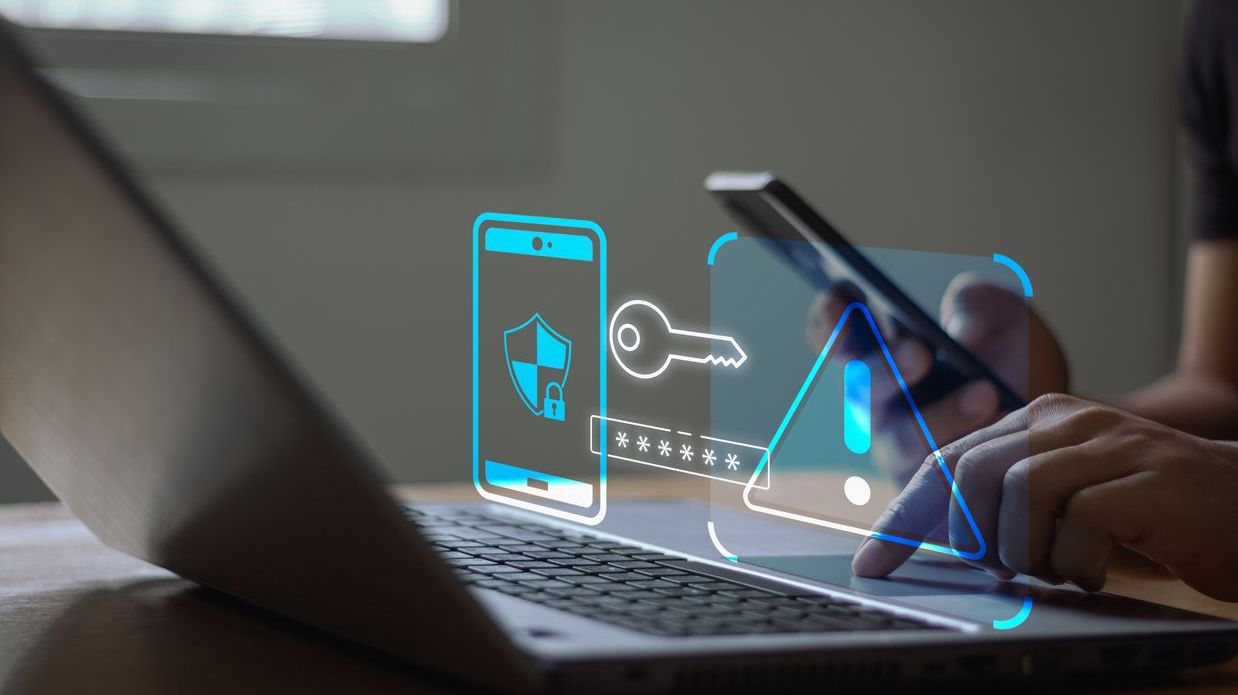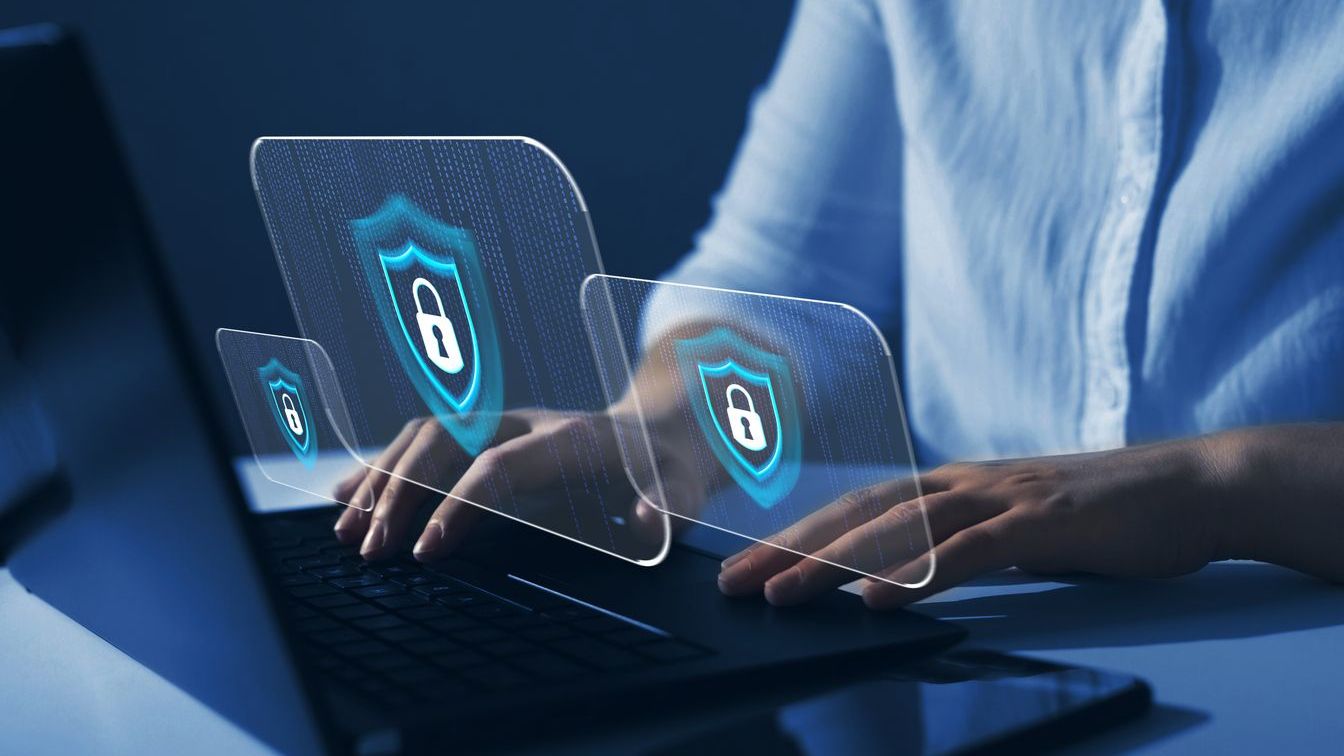In today’s digital workplace, employee scheduling systems have become essential tools for managing workforce operations. However, with the increasing importance of these platforms comes a greater need for robust security measures. Multi-factor authentication (MFA) scheduling represents a critical advancement in protecting sensitive employee data and scheduling systems from unauthorized access. By requiring users to verify their identity through multiple validation methods, MFA adds crucial layers of security beyond the traditional username and password combination. For businesses managing shift workers across various industries, implementing MFA in scheduling processes has become not just a security best practice but often a regulatory requirement.
The intersection of MFA solutions and employee scheduling creates a powerful framework for secure workforce management. As organizations increasingly rely on digital platforms like Shyft to handle complex scheduling operations, the need to protect these systems from potential breaches becomes paramount. MFA scheduling effectively balances security requirements with user experience considerations, ensuring that employees can access their schedules securely while minimizing friction in day-to-day operations. This comprehensive approach to authentication helps prevent common security threats such as credential theft, phishing attacks, and unauthorized schedule modifications that could disrupt business operations and compromise sensitive employee information.
Understanding MFA in Employee Scheduling
Multi-factor authentication represents a significant advancement over traditional single-factor authentication methods that rely solely on passwords. In the context of employee scheduling, MFA provides critical protection for systems that contain sensitive workforce information and operational data. Understanding the fundamentals of MFA helps organizations implement effective security strategies that protect scheduling processes without impeding productivity. The core principle of MFA is straightforward: require users to verify their identity through multiple independent authentication methods before granting access to scheduling platforms.
- Knowledge Factors: Something the user knows, such as passwords, PINs, or answers to security questions related to scheduling preferences.
- Possession Factors: Something the user physically possesses, like a smartphone for receiving authentication codes, a hardware token, or a smart card.
- Inherence Factors: Biological characteristics of the user, including fingerprints, facial recognition, or voice identification that can be used for shift check-ins.
- Location Factors: Geographic positioning that verifies users are accessing the system from approved locations or work sites.
- Time Factors: Restrictions that limit system access to specific timeframes, such as scheduled work hours or appropriate administrative periods.
When implemented within scheduling software, MFA creates multiple verification checkpoints that significantly reduce the risk of unauthorized access. This layered approach ensures that even if one authentication factor is compromised—for example, if a password is stolen—attackers still cannot access the scheduling system without the additional verification methods. For shift-based businesses, this protection is invaluable for maintaining operational integrity and safeguarding employee data.
Benefits of Implementing MFA in Scheduling Systems
The implementation of multi-factor authentication in employee scheduling systems offers substantial advantages beyond basic security enhancements. Organizations that integrate MFA with their scheduling platforms experience improvements across multiple operational dimensions, from regulatory compliance to user confidence. These benefits collectively strengthen the organization’s security posture while supporting efficient workforce management practices.
- Dramatically Reduced Security Breaches: Studies show MFA can block up to 99.9% of automated attacks, significantly decreasing the likelihood of unauthorized schedule changes or data theft.
- Enhanced Regulatory Compliance: MFA helps organizations meet increasingly stringent data protection regulations in industries like healthcare, retail, and financial services.
- Prevention of Credential Stuffing Attacks: MFA effectively neutralizes the threat of credential stuffing, where attackers use stolen username/password combinations to access scheduling systems.
- Protection Against Phishing Attempts: Even if employees fall victim to sophisticated phishing scams, MFA provides an additional security layer that prevents account compromise.
- Increased Accountability: MFA creates clear audit trails of who accessed scheduling systems, when they did so, and what changes they made to shifts or schedules.
Business performance also improves through enhanced schedule integrity. When MFA is properly implemented, organizations experience fewer instances of unauthorized schedule modifications, “buddy punching” (where one employee clocks in for another), and time theft. This improved security translates directly to operational reliability, particularly in industries with strict staffing requirements such as healthcare, retail, and hospitality.
Common MFA Methods for Workforce Management
Modern employee scheduling platforms offer various MFA methods that can be tailored to the unique needs of different workforce environments. Selecting the right combination of authentication mechanisms depends on factors such as the nature of the work, employee technology access, and operational requirements. Biometric systems have become increasingly popular for workforce authentication, while mobile-based solutions offer convenience for employees who already use smartphones for schedule access.
- SMS-Based Verification: One-time passcodes sent via text message provide a familiar and accessible authentication method for most employees with mobile phones.
- Authenticator Apps: Applications like Google Authenticator or Microsoft Authenticator generate time-sensitive verification codes that add significant security to scheduling access.
- Biometric Authentication: Fingerprint, facial recognition, or voice verification offers highly secure, unique authentication options that are difficult to forge or replicate.
- Push Notifications: Simple approve/deny notifications sent to registered mobile devices provide a user-friendly authentication experience with minimal friction.
- Hardware Tokens: Physical devices that generate verification codes offer high security for sensitive environments without requiring smartphone access.
Importantly, the most effective MFA implementations for scheduling systems consider both security requirements and user experience. For shift workers accessing their schedules through mobile applications, methods like biometric authentication or push notifications often provide the optimal balance of security and convenience. For managers with administrative access to scheduling platforms, more robust combinations of authentication factors may be appropriate given their elevated system privileges.
Implementation Strategies for MFA in Scheduling Platforms
Successfully implementing MFA for employee scheduling requires careful planning and execution. Organizations should develop comprehensive strategies that account for technical, operational, and human factors. The implementation process typically involves multiple phases, beginning with assessment and planning, followed by a controlled rollout, and continuing with ongoing monitoring and optimization. Proper implementation and training are critical factors in achieving high user adoption rates and realizing the full security benefits of MFA.
- Phased Implementation Approach: Begin with pilot groups or administrative users before expanding to the entire workforce to identify and address potential issues early.
- Clear Communication Plans: Develop comprehensive messaging that explains why MFA is being implemented, how it works, and how it benefits both the organization and employees.
- User Training Resources: Create accessible training materials including videos, written guides, and in-person sessions to help employees navigate the new authentication requirements.
- Technical Support Preparation: Establish dedicated support channels to assist users who encounter difficulties during the transition to MFA.
- Fallback Authentication Methods: Implement secure backup authentication options for scenarios where primary MFA methods are unavailable.
Integration technologies play a crucial role in MFA implementation, particularly for organizations with existing identity management systems. Modern scheduling platforms like Shyft can integrate with single sign-on (SSO) solutions and identity providers, allowing for centralized authentication management while maintaining strong security through MFA requirements. This integration creates a more seamless experience for employees while meeting organizational security standards.
Overcoming Challenges in MFA Adoption
While the security benefits of MFA for scheduling systems are clear, organizations often face challenges during implementation and adoption. Resistance to change, concerns about convenience, and technical difficulties can potentially impede successful deployment. Addressing these challenges proactively helps ensure smooth adoption and maximizes the security benefits of MFA. Effective communication strategies are essential for overcoming resistance and helping employees understand the value of enhanced authentication measures.
- User Resistance Management: Address concerns about added steps or complexity by emphasizing the protection MFA provides for both personal and organizational data.
- Accessibility Considerations: Ensure MFA methods accommodate employees with disabilities or those who may have limited technology access.
- Technical Infrastructure Requirements: Evaluate and upgrade network capabilities, device compatibility, and system architecture to support MFA implementation.
- Balance Between Security and Usability: Carefully select authentication methods that provide robust protection without creating excessive friction in daily scheduling workflows.
- Cost Management Strategies: Develop comprehensive budgets that account for implementation, training, ongoing maintenance, and potential productivity impacts during transition.
Organizations implementing MFA should consider flexible options that accommodate diverse workforce needs. For example, allowing employees to choose from multiple authentication methods can increase acceptance while maintaining security standards. Additionally, creating clear policies for exception handling—such as temporary bypass procedures for legitimate situations—helps address edge cases without compromising overall security architecture.
Best Practices for MFA Scheduling Security
Implementing MFA is just the beginning of creating a secure employee scheduling environment. Organizations should follow established best practices to maximize protection while ensuring systems remain usable and efficient. These practices encompass technical configurations, policy development, and ongoing management processes. Regular system performance evaluations help ensure MFA implementations remain effective and adapt to evolving security threats.
- Risk-Based Authentication Approach: Implement adaptive MFA that adjusts security requirements based on contextual factors like location, device, and access patterns.
- Regular Security Assessments: Conduct periodic audits and penetration testing to identify and address potential vulnerabilities in authentication systems.
- Clear Authentication Policies: Develop comprehensive documentation outlining when and how MFA is required, including special circumstances and exception procedures.
- Session Management Controls: Implement appropriate timeouts and session restrictions to prevent unauthorized access via abandoned sessions.
- Continuous User Education: Provide ongoing training about security threats and best practices to maintain high awareness of authentication security.
Organizations should also develop strong data privacy practices that complement MFA implementation. This includes proper handling of biometric data, compliance with privacy regulations, and transparent communication about how authentication data is stored and used. By approaching MFA as part of a comprehensive security strategy rather than an isolated solution, businesses can create robust protection for their scheduling systems.
Future Trends in MFA for Employee Scheduling
The landscape of authentication technology continues to evolve rapidly, with emerging innovations poised to enhance MFA for scheduling systems. Organizations should monitor these developments to stay ahead of security threats and leverage new capabilities that improve both protection and user experience. Artificial intelligence and machine learning are increasingly influential in authentication systems, enabling more sophisticated threat detection and adaptive security measures.
- Passwordless Authentication: The increasing shift toward eliminating passwords entirely in favor of more secure and convenient authentication factors like biometrics and security keys.
- Behavioral Biometrics: Advanced systems that authenticate users based on unique behavioral patterns such as typing rhythms, mouse movements, or interaction habits.
- Continuous Authentication: Ongoing verification that constantly assesses user legitimacy throughout a session rather than only at login.
- Decentralized Identity Systems: Blockchain and distributed ledger solutions that give users greater control over their identity credentials while maintaining high security.
- Contextual Authentication: Sophisticated systems that consider multiple environmental factors to determine authentication requirements dynamically.
The integration of wearable technology with authentication systems represents another frontier for MFA in workforce management. Devices like smartwatches can serve as possession factors for authentication while also supporting proximity-based access control—automatically logging users out when they leave their workstation. These innovations help create authentication systems that maintain high security while reducing friction in the employee scheduling experience.
MFA Considerations for Different Industries
Different sectors face unique challenges and requirements when implementing MFA for scheduling systems. Industry-specific regulations, operational constraints, and workforce characteristics all influence how multi-factor authentication should be configured and deployed. Organizations should tailor their MFA strategies to address these distinct considerations while maintaining core security principles. For retail environments, solutions that accommodate high employee turnover and shared device usage are particularly valuable.
- Healthcare Scheduling Security: Medical facilities require MFA solutions that comply with HIPAA and other healthcare regulations while accommodating around-the-clock operations and emergency access scenarios.
- Retail Workforce Authentication: Retail businesses need authentication methods that work effectively in fast-paced environments with multiple shift changes and seasonal staffing fluctuations.
- Hospitality Industry Approaches: Hotels and restaurants benefit from MFA systems that accommodate varied staff roles, multiple locations, and high turnover rates.
- Manufacturing Security Requirements: Factory and production environments require robust authentication that functions reliably in industrial settings with potential connectivity limitations.
- Transportation and Logistics Authentication: Mobile workforce authentication solutions that accommodate employees operating across geographic areas with varied connectivity.
Organizations in regulated industries should pay particular attention to compliance requirements that influence authentication strategies. For example, financial institutions may need to implement specific authentication controls to meet PCI DSS standards, while government contractors might require NIST-compliant solutions. Understanding these requirements early in the implementation process helps ensure that MFA deployments satisfy both security and regulatory needs.
Measuring Success of MFA Implementation
Assessing the effectiveness of MFA deployment for scheduling systems requires comprehensive metrics and evaluation frameworks. Organizations should establish clear success criteria before implementation and regularly measure performance against these benchmarks. Tracking appropriate metrics provides valuable insights for continuous improvement and helps demonstrate the return on investment for security enhancements.
- Security Incident Reduction: Measure changes in the frequency and severity of security breaches, unauthorized access attempts, and account compromise incidents.
- User Adoption Rates: Track the percentage of employees successfully using MFA and identify patterns in adoption across different departments or employee groups.
- Authentication Failure Analysis: Monitor failed authentication attempts to distinguish between legitimate user errors and potential attack patterns.
- Help Desk Impact Assessment: Evaluate changes in support tickets related to authentication issues to identify potential problems and training opportunities.
- User Satisfaction Surveys: Gather feedback from employees about their experience with MFA to identify pain points and improvement opportunities.
Organizations should also consider the broader operational impacts of MFA implementation, including effects on shift management performance and scheduling efficiency. For example, measuring time spent on authentication processes and evaluating whether MFA has influenced punctuality or schedule adherence can provide valuable insights. These measurements help organizations balance security enhancements with operational considerations and refine their authentication strategies accordingly.
Conclusion
Multi-factor authentication represents an essential component of modern employee scheduling security. As workforce management systems continue to digitize and handle increasingly sensitive information, robust authentication becomes not just a security best practice but a business necessity. Successful MFA implementation requires thoughtful planning, appropriate technology selection, effective change management, and ongoing optimization. Organizations that approach MFA strategically can significantly enhance their security posture while maintaining operational efficiency and user satisfaction.
The future of MFA in scheduling systems will likely see continued innovation, with emerging technologies making authentication both more secure and more seamless. Organizations should stay informed about these developments and maintain flexible security strategies that can adapt to evolving threats and capabilities. By prioritizing authentication security within their employee scheduling systems, businesses can protect sensitive workforce data, ensure schedule integrity, and build confidence among employees that their information is being handled responsibly. With proper implementation and management, MFA provides a powerful foundation for secure workforce management in an increasingly complex digital environment.
FAQ
1. What is MFA scheduling and why is it important for employee management?
MFA scheduling refers to the implementation of multi-factor authentication within employee scheduling systems to verify user identities through multiple verification methods. It’s important because it significantly enhances security beyond traditional password protection, protecting sensitive employee data and preventing unauthorized schedule modifications. In industries with compliance requirements like healthcare and finance, MFA helps meet regulatory standards while reducing the risk of data breaches that could compromise employee information or disrupt operations through unauthorized schedule changes.
2. Which MFA methods work best for shift-based workforces?
For shift-based workforces, the most effective MFA methods balance security with convenience and operational realities. Push notifications to mobile devices tend to work well because they’re simple, requiring just a single tap to approve access. Biometric authentication like fingerprint or facial recognition is also effective for shift workers, particularly when integrated with time clock systems. For environments where employees don’t have company devices, SMS verification codes provide accessibility, though they’re slightly less secure than dedicated authenticator apps. The best approach often involves offering multiple options to accommodate different roles and work environments.
3. How can organizations overcome employee resistance to MFA for scheduling?
Overcoming resistance requires a combination of education, proper implementation, and responsive support. Organizations should clearly communicate the purpose and benefits of MFA, emphasizing both company security and protection of personal information. Phased rollouts with pilot groups can identify and address issues before full deployment. User-friendly authentication options that minimize friction in daily workflows help reduce frustration. Comprehensive training with clear documentation, coupled with readily available technical support during the transition period, is essential. Finally, gathering and responding to user feedback demonstrates organizational commitment to balancing security with employee experience.
4. What integration considerations should be addressed when implementing MFA for scheduling systems?
Key integration considerations include compatibility with existing identity management systems, single sign-on capabilities, and alignment with broader security architecture. Organizations should evaluate whether the MFA solution can integrate with current directory services (like Active Directory or LDAP) and with scheduling software APIs. Mobile device management (MDM) compatibility may be important for company-owned devices. Organizations using cloud computing should ensure the MFA solution works effectively with their cloud infrastructure. Additionally, integration with incident response systems and security monitoring tools helps create comprehensive protection for scheduling environments.
5. How does MFA for scheduling impact compliance with labor regulations?
MFA strengthens compliance with labor regulations in several ways. By creating verifiable authentication records, it helps organizations demonstrate who accessed scheduling systems and when, supporting accurate record-keeping requirements. For industries subject to specific data protection regulations (like HIPAA in healthcare), MFA provides required security controls for accessing employee information. MFA also helps prevent time theft and “buddy punching” by ensuring only authorized individuals can clock in or modify schedules, supporting accurate wage and hour compliance. In jurisdictions with predictive scheduling laws, MFA helps create audit trails that verify schedule posting timeframes and modifications, reducing compliance risks.












